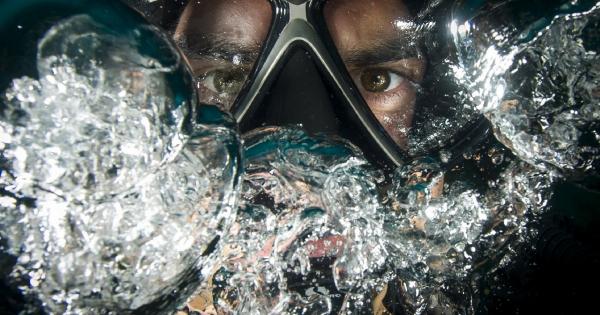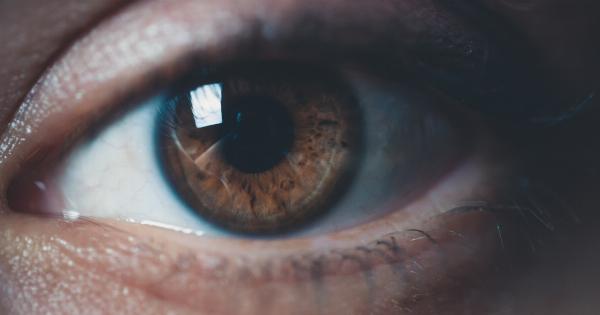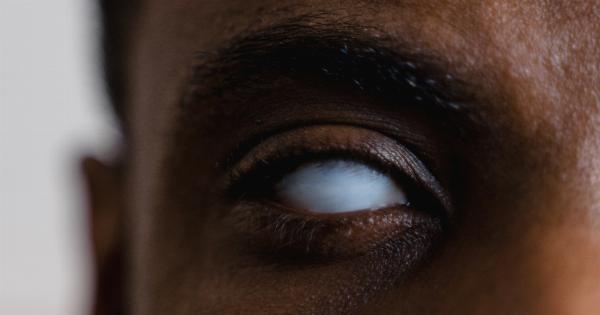We’ve all been there – chewing gum absentmindedly and suddenly, it pops out of your mouth and flies straight towards your eye. The fear of getting gum in your eyes is not unfounded – gum can be a serious hazard to your vision.
Gum can cause eye injuries ranging from minor irritation to severe damage like corneal abrasions and infections. This article will discuss the risks associated with gum and your eyes, ways to prevent gum from getting in your eyes, and what to do if gum accidentally does make contact with your eyes.
Understanding the Risks
Gum consists of various synthetic and natural ingredients. It is sticky and can attach to surfaces like hair, skin, and clothes.
When gum gets near your eye, it sticks to the eyelashes and skin around the eye, making it hard to remove without causing further damage.
The main risk associated with gum in the eyes is the cornea’s abrasion. The cornea is a clear layer that covers the front of the eye and plays a critical role in vision.
An object as small as a piece of gum can cause significant damage to the cornea, leading to pain, redness, sensitivity, and blurry vision. If not treated promptly, corneal abrasions can cause infections and potentially vision loss.
Another risk associated with gum in the eyes is the possibility of developing conjunctivitis. Conjunctivitis, commonly known as pink eye, is an infection that affects the outer layer of the eye.
Symptoms include redness, itching, a gritty feeling in the eye, and discharge. If gum bacteria gets into the eye, it can cause an infection, leading to a case of conjunctivitis.
Preventing Gum from Getting in Your Eyes
Of course, the best way to avoid an eye injury caused by gum is to prevent it from getting near your eyes in the first place. Here are some ways to keep gum away from your eyes:.
- Avoid chewing gum in situations where there’s a high chance of it getting in your eyes, like in a windy environment or while playing sports.
- Avoid blowing bubbles with gum as it increases the odds of the gum popping and landing in your eyes.
- When disposing of gum, instead of spitting it on the ground, wrap it in a tissue and dispose of it properly.
- If you notice your gum becoming loose while you’re chewing it, remove it from your mouth and dispose of it carefully.
- Teach children about the dangers of gum in their eyes, and supervise them while they’re chewing gum, especially outdoors.
What to Do If Gum Gets in Your Eyes
Despite our best efforts, accidents can happen, and gum can make its way into your eye. If this happens to you, stay calm, and follow these steps:.
- Don’t rub your eyes – this can make things worse and cause further irritation and redness.
- Wash your hands with soap and water to prevent the spread of bacteria, then gently remove any visible gum with a damp cloth or tissue.
- If the gum is stuck to the eyelashes, use a clean, damp cotton swab to remove it gently. If that’s not possible, try to pull the eyelid up and blink repeatedly so that your tears can flush the gum out.
- After removing the gum, rinse the eye thoroughly with water to eliminate any remaining gum particles that you may not be able to remove on your own.
- If you experience any pain, sensitivity to light, or blurry vision, seek medical attention from an eye care professional.
Conclusion
While gum may seem innocent and small, it can cause significant eye injuries. Knowing the risks associated with gum and eyes is essential in preventing gum from harming your vision.
Staying cautious and implementing preventive measures can keep you safe and avoid accidents. But in the event that gum does end up in your eye, it’s essential to act quickly and seek professional help if needed to avoid further damage to your eyesight.






























